Adenophyllum porophylloides, San Felipe Dogwood
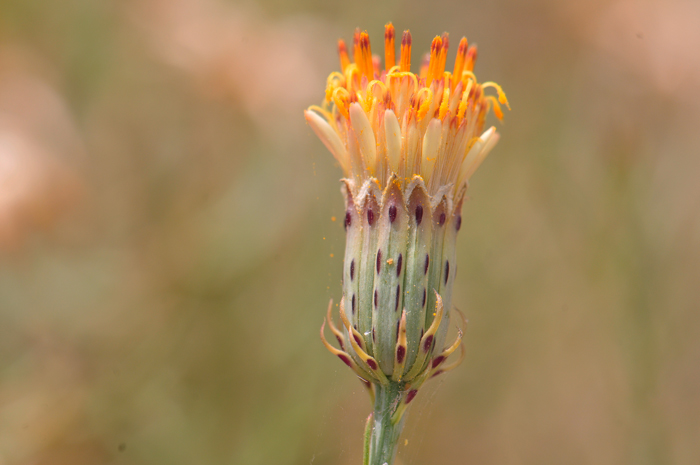
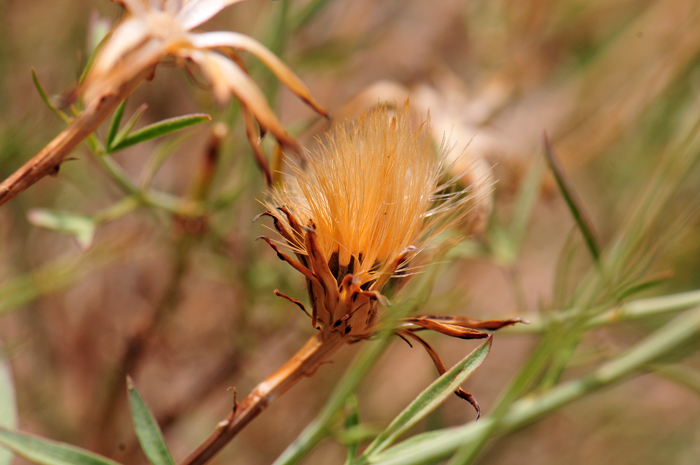
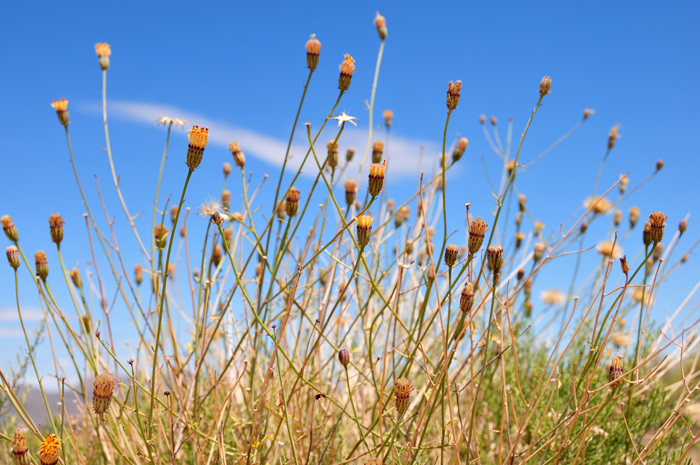
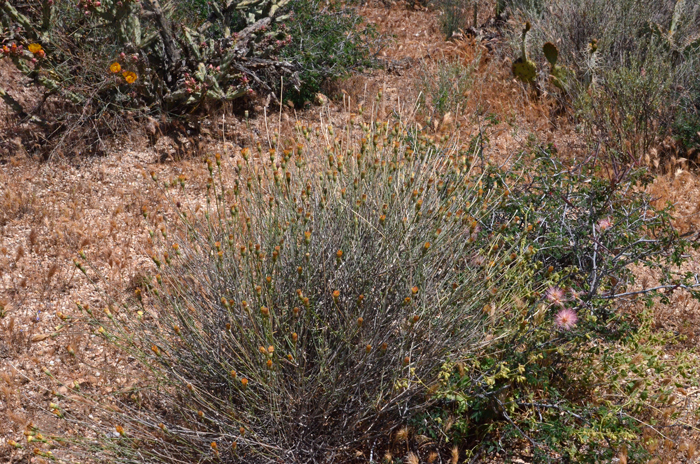
Scientific Name: Adenophyllum porophylloides
Common Name: San Felipe Dogwood
Also Called: San Felipe Dyssodia
Family: Asteraceae, Sunflower Family
Synonyms: (Dyssodia porophylloides)
Status: Native
Duration: Perennial
Size: 8 to 20 inches (20-50+ cm.) or so.
Growth Form: Subshrub; has thick woody base; plants erect or ascending, multiple stems, stems without surface ornamentation such as hairs, scales or bristles, (glabrous); stems and branches slender; plants with disagreeable odor, aromatic to some.
Leaves: Dark green; basal leaves are arranged opposite along the stem and the upper (cauline) leaves are alternate; the leaves are pinnately lobed; leaf shapes variable; the leaves have very small but prominent secretory oil or resin producing glands located at the base of each lobe.
Flower Color: Yellow; becoming orange or red-orange with age; the flower heads, ½ x 1 inch, (1.3-2.5 cm) on the tips supporting stalks; floral heads with both ray and disk florets; there are 12 to 20 bracts or phyllaries surrounding the flower heads, lanceolate in shape each with multiple resinous glands; the fruit is a brownish cypsela with straight stiff bristles.
Flowering Season: March to June and again from October to December, with ample summer rainfall.
Elevation: 50 to 4,000 feet (15-1,200 m) .
Habitat Preferences: Washes, mesas, dry, rocky slopes in deserts, alluvial fans, open scrub and woodlands; found in both Sonoran and Mojave Deserts.
Recorded Range: San Felipe Dogwood is relatively rare in the United States where it is limited in distribution to AZ, CA and NV. This species is also native to northern Baja California, Baja California Sur and northwestern Sonora Mexico.
U.S. Weed Information: Unknown
Invasive/Noxious Weed Information: Unknown
Wetland Indicator: Unknown
Threatened/Endangered Information: Unknown
North America & US County Distribution Map for Adenophyllum porophylloides.
North America species range map for San Felipe Dogwood, Adenophyllum porophylloides:
North American range map courtesy of Virginia Tech, Dept. of Forest Resources & Environmental Conservation
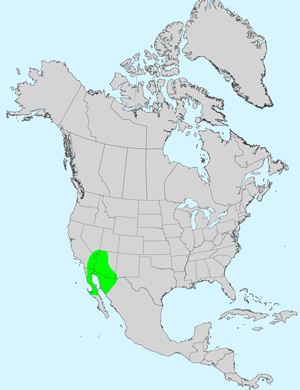
Genus Information: In North America there are 4 species and 4 accepted taxa overall for Adenophyllum. World wide, The Plant List includes 62 accepted species names and includes a further 10 of infraspecific rank for the genus Adenophyllum.
The genus Adenophyllum was published in 1807 by Christiaan Hendrik Persoon.
In the Southwestern United States: Arizona has 4 species of Adenophyllum, California and Nevada each have 2 species, New Mexico and Utah each have 1 species and Texas has 0 species. Data approximate, subject to revision.
Comments: San Felipe Dogweed is both a Mojave and Sonoran deserts species. Through its numerous resin glands this species emits a pungent rather unpleasant odor although it is aromatic to some.
At a quick glance San Felipe Dogweed looks superficially like its closely related cousin Odora, Porophyllum gracile, which has significant differences in the flower head. They both also have strong disagreeable odors.
The genus Adenophyllum was published in 1807 by Christiaan Hendrik Persoon.
The specific epithet, porophylloides (porophyllo'ides:) mean "with leaves like those of Porophyllum". Porophyllum is from the Greek "poros", "a passage or pore," and phyllon, "leaf," thus literally "pore-leaf," because of the translucent glands dotting the leaf which give it a punctate appearance.

